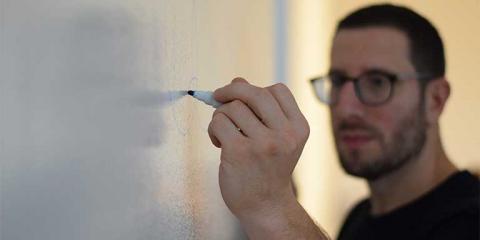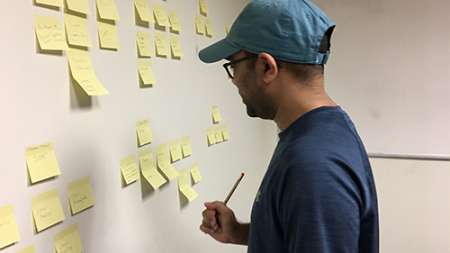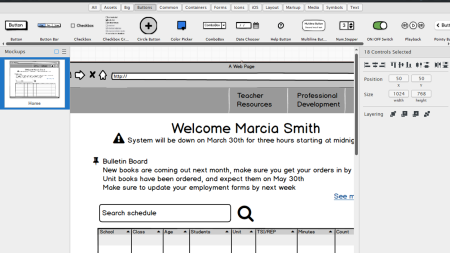
Related Class
How to highlight your UX design skills
- Published on

Whether you've got a firm grasp on the fundamentals of user experience design after taking UX training at the American Graphics Institute or are just starting to explore this exciting creative discipline, there is little doubt that demand for UX professionals has never been higher. However, if you're new to the field, how do you show off what you can do, or highlight your UX design chops?
Skills first
One way to promote your newfound UX design skills is by doing precisely that with your resume. Adopting a skills-based resume format is an ideal opportunity to present your UX design skills in a clear, concise manner that potential employers will be able to see quickly.
For example, you could list your UX skills toward the top of your resume, before moving onto the work experience section. This allows hiring managers to see, at a glance, what you can do before learning more about your professional background. This is crucial for individuals who may know how to design and craft engaging user experiences, but who lack that vital first position often necessary to secure a job. Common UX design skills you could emphasize include Web analytics reporting, heuristic evaluations, stakeholder interviews, SWOT analysis, usability testing and affinity mapping.
Prove it
One common mistake people in all fields make when transitioning into a new career or attempting to advance in their current profession is making claims on their resume that aren't backed up by their actual experience. This means that a candidate might claim to be a team player or possess excellent interpersonal communication skills, but fail to provide demonstrable examples of how these skills served them in the past.
This principle of being able to prove what you can do is essential when seeking a UX design position. Some UX creatives assume that showcasing a range of their project deliverables in a portfolio is sufficient to at least land them an interview, when in fact the relationship between the process and the final product is often much more nuanced. When it comes to proving your skills, the end result is only one part of the puzzle. Most hiring managers will expect to see a narrative in your work - how you applied your UX design sensibilities to an evolving and adapting project. Don't just rely on a sleek software product - tell a story with the examples in your portfolio.
About the author
Jennifer Smith is a user experience designer, educator and author based in Boston. She has worked in the field of user experience design for more than 15 years.She has designed websites, ecommerce sites, apps, and embedded systems. Jennifer designs solutions for mobile, desktop, and iOT devices.
Jennifer delivers UX training and UX consulting for large Fortune 100 companies, small start-ups, and independent software vendors.She has served as a Designer in Residence at Microsoft, assisting third-party app developers to improve their design solutions and create successful user experiences. She has been hired by Adobe and Microsoft to deliver training workshops to their staff, and has traveled to Asia, Europe, India, the Middle East, and across the U.S. to deliver courses and assist on UX design projects. She has extensive knowledge of modern UX Design, and worked closely with major tech companies to create educational material and deliver UX workshops to key partners globally. Jennifer works with a wide range of prototyping tools including XD, Sketch, Balsamiq, Fireworks, Photoshop, Illustrator, and Blend for Visual Studio. She also works extensively in the fields of presentation design and visual design.
Jennifer is also an expert on Photoshop, digital image editing, and photo manipulation. Having written 10 books on Photoshop, and having consulted and provided training to major media companies and businesses around the globe.
Jennifer is the author of more than 20 books on design tools and processes, including Adobe Creative Cloud for Dummies, Adobe Creative Cloud Digital Classroom, and Photoshop Digital Classroom. She has been awarded a Microsoft MVP three times for her work with user experience design in creating apps for touch, desktop, and mobile devices. Jennifer holds the CPUX-F certification from the User Experience Qualification Board and assists others in attaining this designation in leading a UX certification course at American Graphics Institute. She is a candidate for a Master’s degree in Human Factors in Information Design.


